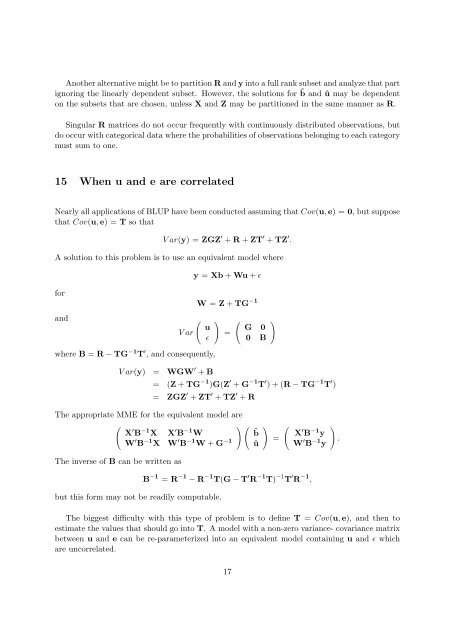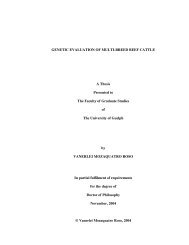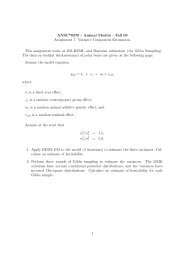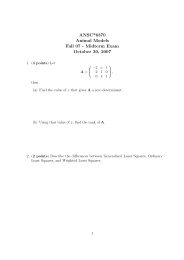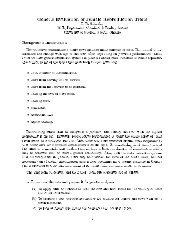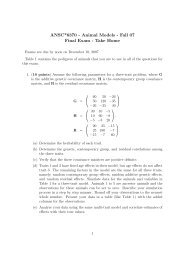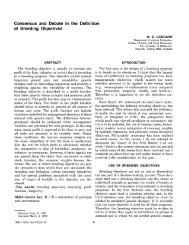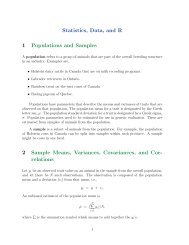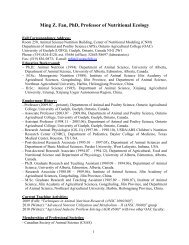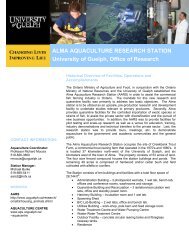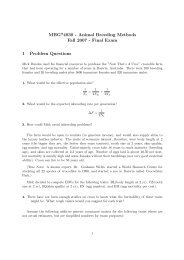Prediction Theory 1 Introduction 2 General Linear Mixed Model
Prediction Theory 1 Introduction 2 General Linear Mixed Model
Prediction Theory 1 Introduction 2 General Linear Mixed Model
You also want an ePaper? Increase the reach of your titles
YUMPU automatically turns print PDFs into web optimized ePapers that Google loves.
Another alternative might be to partition R and y into a full rank subset and analyze that part<br />
ignoring the linearly dependent subset. However, the solutions for ˆb and û may be dependent<br />
on the subsets that are chosen, unless X and Z may be partitioned in the same manner as R.<br />
Singular R matrices do not occur frequently with continuously distributed observations, but<br />
do occur with categorical data where the probabilities of observations belonging to each category<br />
must sum to one.<br />
15 When u and e are correlated<br />
Nearly all applications of BLUP have been conducted assuming that Cov(u, e) = 0, but suppose<br />
that Cov(u, e) = T so that<br />
V ar(y) = ZGZ ′ + R + ZT ′ + TZ ′ .<br />
A solution to this problem is to use an equivalent model where<br />
y = Xb + Wu + ɛ<br />
for<br />
and<br />
(<br />
u<br />
V ar<br />
ɛ<br />
W = Z + TG −1<br />
)<br />
=<br />
(<br />
G 0<br />
0 B<br />
)<br />
where B = R − TG −1 T ′ , and consequently,<br />
V ar(y) = WGW ′ + B<br />
= (Z + TG −1 )G(Z ′ + G −1 T ′ ) + (R − TG −1 T ′ )<br />
= ZGZ ′ + ZT ′ + TZ ′ + R<br />
The appropriate MME for the equivalent model are<br />
( ) (<br />
X ′ B −1 X X ′ B −1 W<br />
ˆb<br />
W ′ B −1 X W ′ B −1 W + G −1 û<br />
The inverse of B can be written as<br />
)<br />
=<br />
(<br />
X ′ B −1 y<br />
W ′ B −1 y<br />
)<br />
.<br />
but this form may not be readily computable.<br />
B −1 = R −1 − R −1 T(G − T ′ R −1 T) −1 T ′ R −1 ,<br />
The biggest difficulty with this type of problem is to define T = Cov(u, e), and then to<br />
estimate the values that should go into T. A model with a non-zero variance- covariance matrix<br />
between u and e can be re-parameterized into an equivalent model containing u and ɛ which<br />
are uncorrelated.<br />
17


